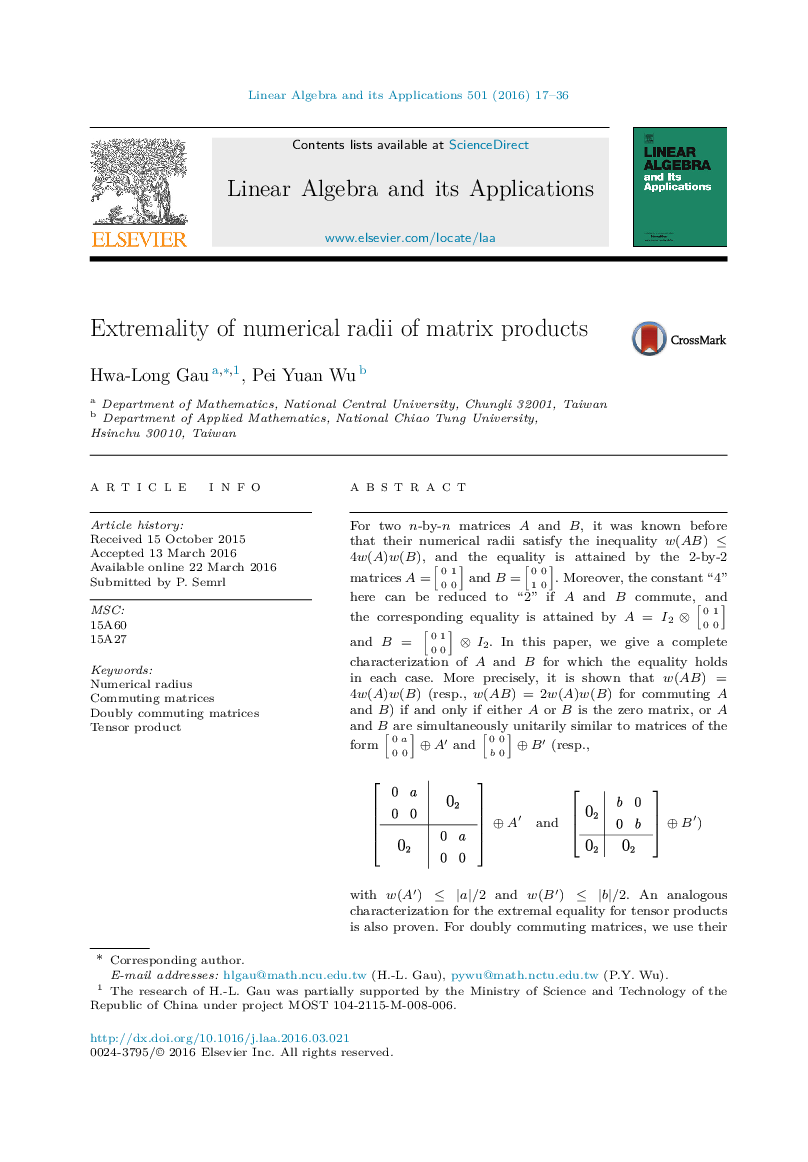| Article ID | Journal | Published Year | Pages | File Type |
|---|---|---|---|---|
| 4598645 | Linear Algebra and its Applications | 2016 | 20 Pages |
For two n-by-n matrices A and B , it was known before that their numerical radii satisfy the inequality w(AB)≤4w(A)w(B)w(AB)≤4w(A)w(B), and the equality is attained by the 2-by-2 matrices A=[0100] and B=[0010]. Moreover, the constant “4” here can be reduced to “2” if A and B commute, and the corresponding equality is attained by A=I2⊗[0100] and B=[0100]⊗I2. In this paper, we give a complete characterization of A and B for which the equality holds in each case. More precisely, it is shown that w(AB)=4w(A)w(B)w(AB)=4w(A)w(B) (resp., w(AB)=2w(A)w(B)w(AB)=2w(A)w(B) for commuting A and B) if and only if either A or B is the zero matrix, or A and B are simultaneously unitarily similar to matrices of the form [0a00]⊕A′ and [00b0]⊕B′ (resp.,⊕A′and⊕B′) with w(A′)≤|a|/2w(A′)≤|a|/2 and w(B′)≤|b|/2w(B′)≤|b|/2. An analogous characterization for the extremal equality for tensor products is also proven. For doubly commuting matrices, we use their unitary similarity model to obtain the corresponding result. For commuting 2-by-2 matrices A and B , we show that w(AB)=w(A)w(B)w(AB)=w(A)w(B) if and only if either A or B is a scalar matrix, or A and B are simultaneously unitarily similar to [a100a2] and [b100b2] with |a1|≥|a2||a1|≥|a2| and |b1|≥|b2||b1|≥|b2|.
